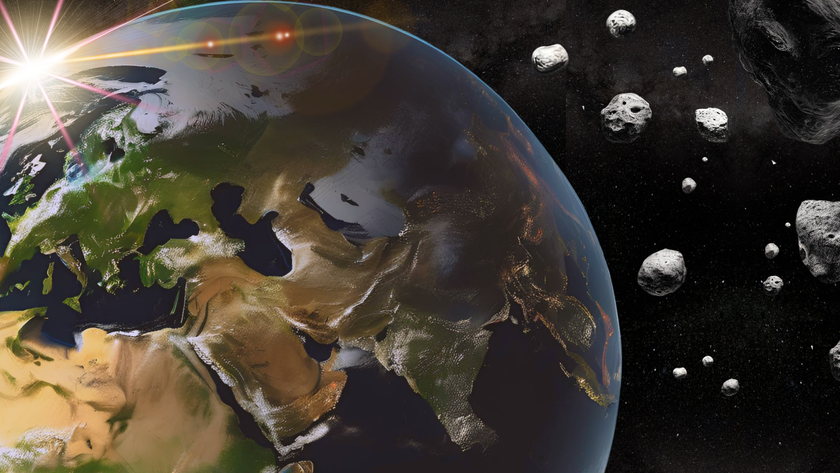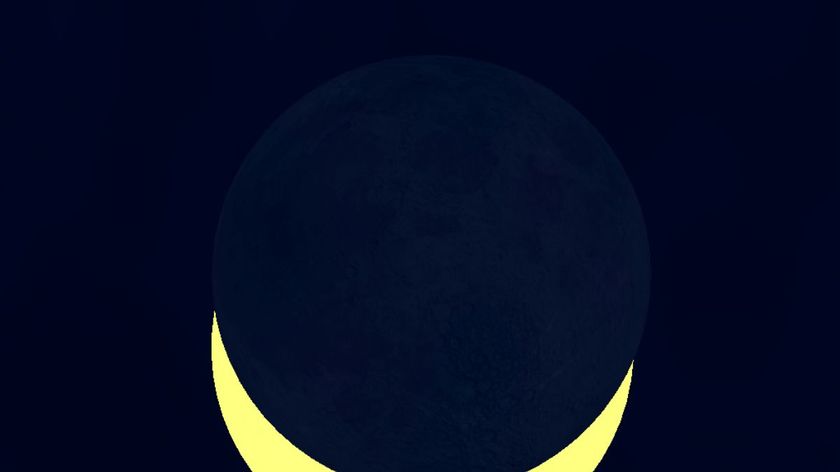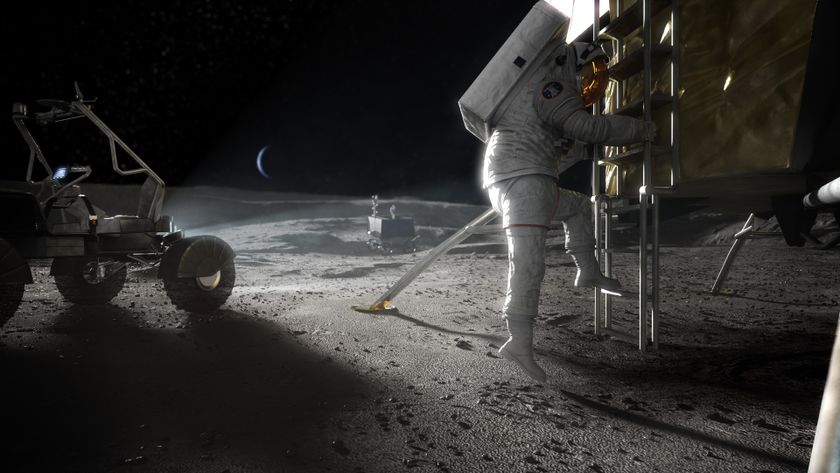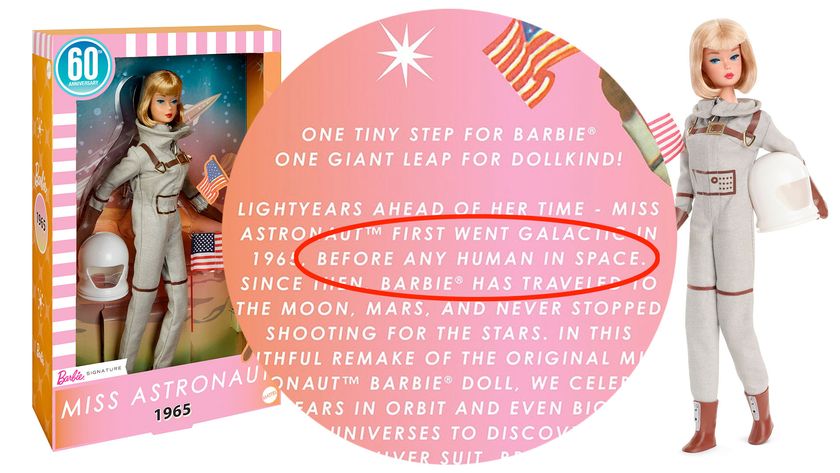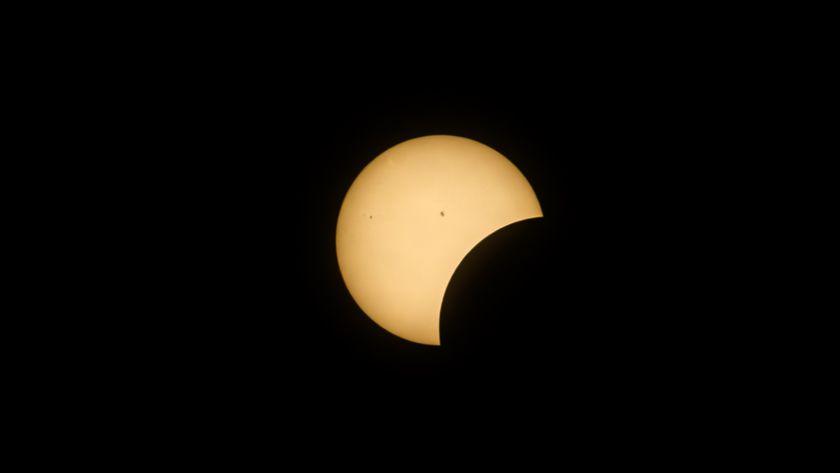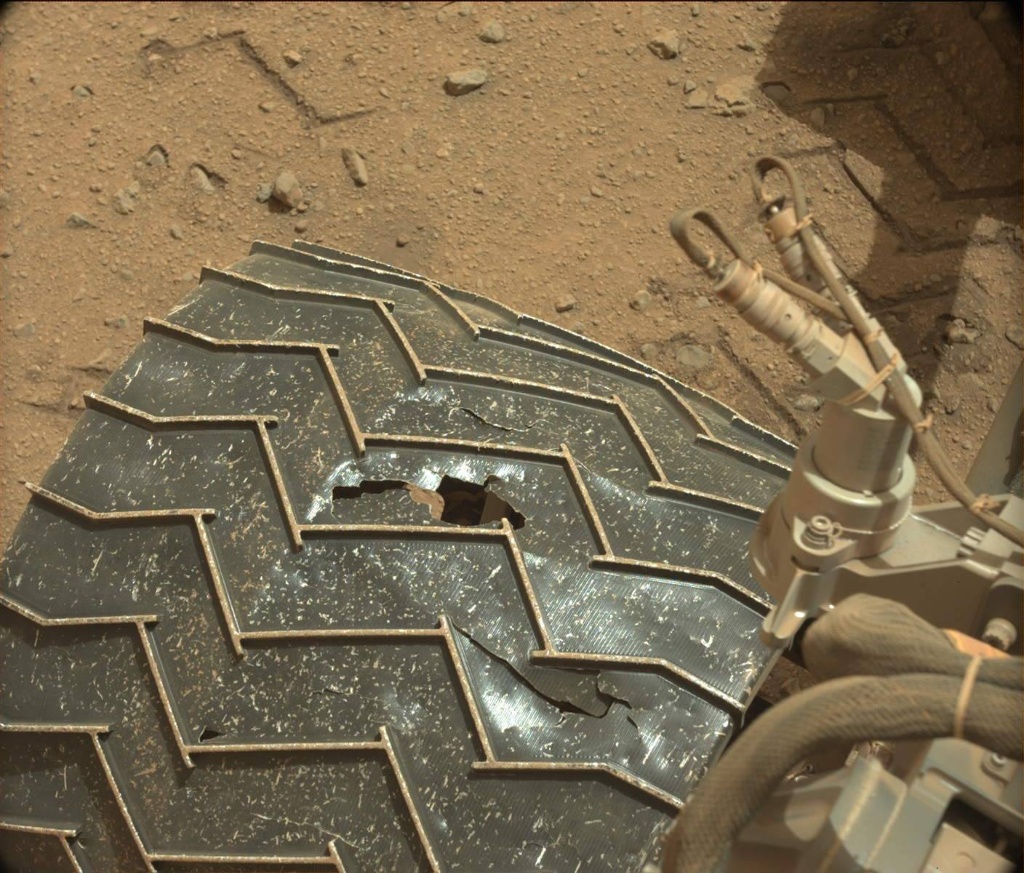
The Curiosity rover's wheels have taken a beating thus far on Mars, and the road ahead may be even rockier.
The 1-ton robot has just crossed out of its landing ellipse — the 12- by 4-mile (19 by 7 kilometers) zone that was targeted for its dramatic August 2012 touchdown — and is now moving toward an increasingly challenging landscape called the Zabriskie Plateau, mission team members said.
"We are heading out into very rough terrain," Curiosity project scientist John Grotzinger, a geologist at the California Institute of Technology in Pasadena, said during a presentation at the 8th International Conference on Mars, which took place at Caltech last week. "These rocks have been a problem for us." [Amazing Mars Rover Curiosity's Martian Views (Latest Photos)]
Curiosity embarked last July on a roughly 5-mile (8 km) drive to the base of Mount Sharp, which has long been its ultimate science destination. The car-size rover has about 2 miles (3.2 km) left to go, researchers said.
Toward the end of 2013, Curiosity encountered a region studded with sharp rocks, which presented the mission with a major technical challenge. Unlike what had been experienced by other Mars rovers, these rocks were embedded in the surface like spikes in a parking lot exit. In previous encounters with such obstacles, most rolled over and did not present a risk to the rover wheels.
The sharp rocks, looking like 3- and 4-inch (7.6 and 10.2 centimeters) shark’s teeth, appeared to be wind-sculpted. Soft formations apparently overlie harder rock, and as the wind scours the region, what is left behind are the jagged remains of the tough subsurface stuff.
"The wind becomes a big problem for our wheels," Grotzinger said. "As the rocks fall apart, they are sculpted by the wind to points that we see as we drive along."
Get the Space.com Newsletter
Breaking space news, the latest updates on rocket launches, skywatching events and more!
Grotzinger and Curiosity rover planner team lead Chris Roumeliotis displayed to the audience at Caltech graphic images of wheel wear captured by Curiosity’s cameras.
"We did an inventory of the wheels," Grotzinger said, "and here’s the image that set us on into a constructed panic."
The mosaic showed wheels that had been dented, punctured and even torn by the rocks below. "To figure out what to do… you take a picture of a metal wheel," he added, "and when you see the planet on the other side [i.e. through a large hole in the wheel], unless it says 'JPL,' it's a problem."
The JPL phrase refers to the holes that had been engineered into the wheels to mark the rover’s path in the sandy surface; these holes spell out 'JPL' in Morse code. But the Martian landscape could be clearly seen through additional rips and tears in the metal.
An extensive testing campaign was immediately initiated both at JPL’s "Mars Yard," a rocky surface set up at the lab, as well as in the field near California's Death Valley.
Roumeliotis showed a video of one such test. It used a roughly 3-inch by 1-inch (7.6 by 2.5 cm) aluminum spike with a dull point to simulate a sharp rock.
"Welcome to 'The Impaler,'" Roumeliotis said as the rover drove over the spike and the wheel’s surface tore like wet paper. There was a visceral gasp from the audience. [Curiosity Completes 1 Martian Year on Red Planet (Video)]
Roumeliotis pointed out that such damage only occurred when the rover was driving forward, due to the pivot points of the suspension system. A similar video of the rover driving backward showed the wheels traversing the spike with no ill effects. In the months ahead, the rover will therefore be driving backward across some of the worst areas, as it did when crossing the last rocky patch. This results in less damage, and what does occur tends to affect two wheels and not four when driving in this mode, team members said.
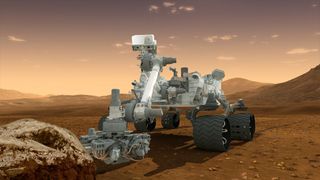
In a later conversation, Grotzinger pointed out that the real strength in Curiosity’s beer-keg-size wheels lies not in the tread surface but rather in the metal ridge and flexible spokes inside. "The internal rim and the flexible spokes really absorb much of the punishment," he said.
The rover team considered seven different pathways for the remaining distance between Curiosity’s current location and the 3.4-mile-high (5.5 km) Mount Sharp, whose many rock layers record a history of Mars' changing environmental conditions over time.
Curiosity will descend into a shallow, sandy-floored valley to avoid the worst of the upcoming terrain. The rover team plans to skirt the deeper sand by hugging the edge of the valley floor, where the drift thins out near the wall.
Someone posted Robert Frost’s poem "The Road Less Taken" at JPL in tribute to the challenging choices ahead, Grotzinger told the crowd. The choice seemed fitting.
"But I’ll bet Frost never imagined there could be seven routes that you might take,"Grotzinger added with a smile.
Follow us @Spacedotcom, Facebook or Google+. Originally published on Space.com.
Join our Space Forums to keep talking space on the latest missions, night sky and more! And if you have a news tip, correction or comment, let us know at: community@space.com.

Rod Pyle is an author, journalist, television producer and editor in chief of Ad Astra magazine for the National Space Society. He has written 18 books on space history, exploration and development, including "Space 2.0," "First on the Moon" and "Innovation the NASA Way." He has written for NASA’s Jet Propulsion Laboratory, Caltech, WIRED, Popular Science, Space.com, Live Science, the World Economic Forum and the Library of Congress. Rod co-authored the "Apollo Leadership Experience" for NASA's Johnson Space Center and has produced, directed and written for The History Channel, Discovery Networks and Disney.

